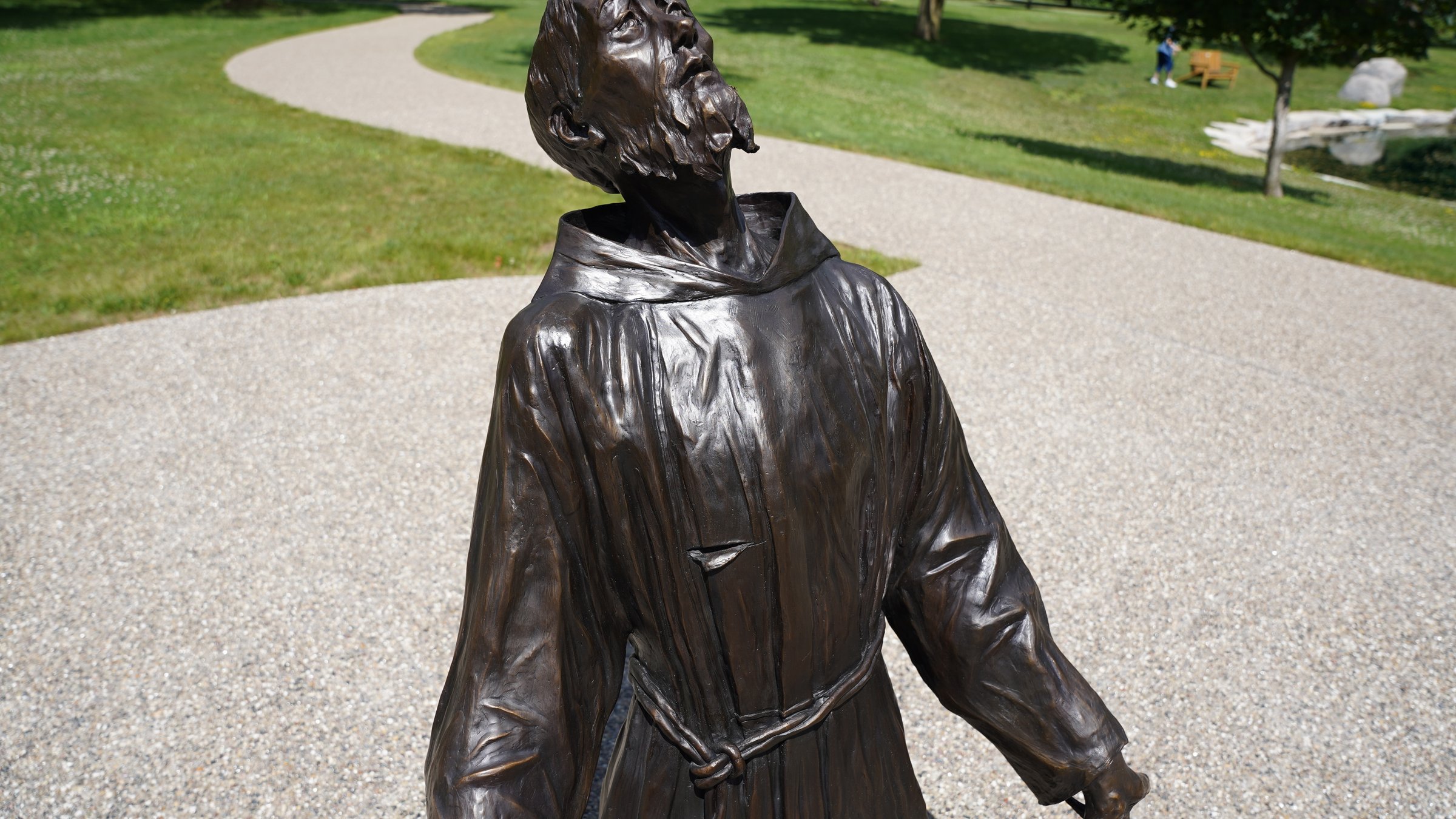Capuchins want people to bring ‘hurts and pains,’ to the statue, uniting themselves to Christ through St. Francis' intercession
WASHINGTON TOWNSHIP ─ A new addition to the grounds of the Capuchin Retreat Center in Washington Township commemorates the 800th anniversary of St. Francis of Assisi receiving the stigmata and calls the faithful to unite their sufferings to Christ’s.
The 6-foot-2 bronze statue shows St. Francis receiving the stigmata as he gazes at the ground’s crucifix.
The statue displayed both the pain the saint is experiencing in receiving the wounds of Christ along with the ecstasy of witnessing a vision of a six-winged seraph, explained artist Mary Dudek.
“The friars wanted a statue of St. Francis in his suffering,” Dudek told Detroit Catholic. “More than any other aspect of St. Francis, they wanted to showcase him in front of the crucifix at the time he received the stigmata, near the end of his life. After he had wasted away his health through rigorous fasting and penances, at the time of his life, when the Lord chose to gift him with uniting his suffering with His own on the cross.”

The statue was unveiled at a June 9 fundraiser on the retreat grounds and is the centerpiece of renovations to the campus to make the grounds more accessible and invite pilgrims and retreatants to enter a more prayerful space on the 95-acre, wooded campus, said Fr. Vito Martinez, OFM Cap., executive director of the Capuchin Retreat Center.
When visitors come to the Capuchin Retreat Center, they are invited to go downhill on the path toward the crucifix, where they will encounter St. Francis gazing up at the cross.
“People were coming to our grounds, going down the pathway and really taking their struggles, their crosses, their grief or turmoil, whatever they were going through, and placing them at the foot of the cross,” Fr. Martinez said. “That was the inspiration for deciding to do something specifically so people could feel in that moment they could lay their burdens at the feet of Jesus.”
The statue occupies the space where a sundial used to be, which Fr. Martinez said was perfectly fine, but the path—which was installed last year—makes for a more interactive, spiritual experience.
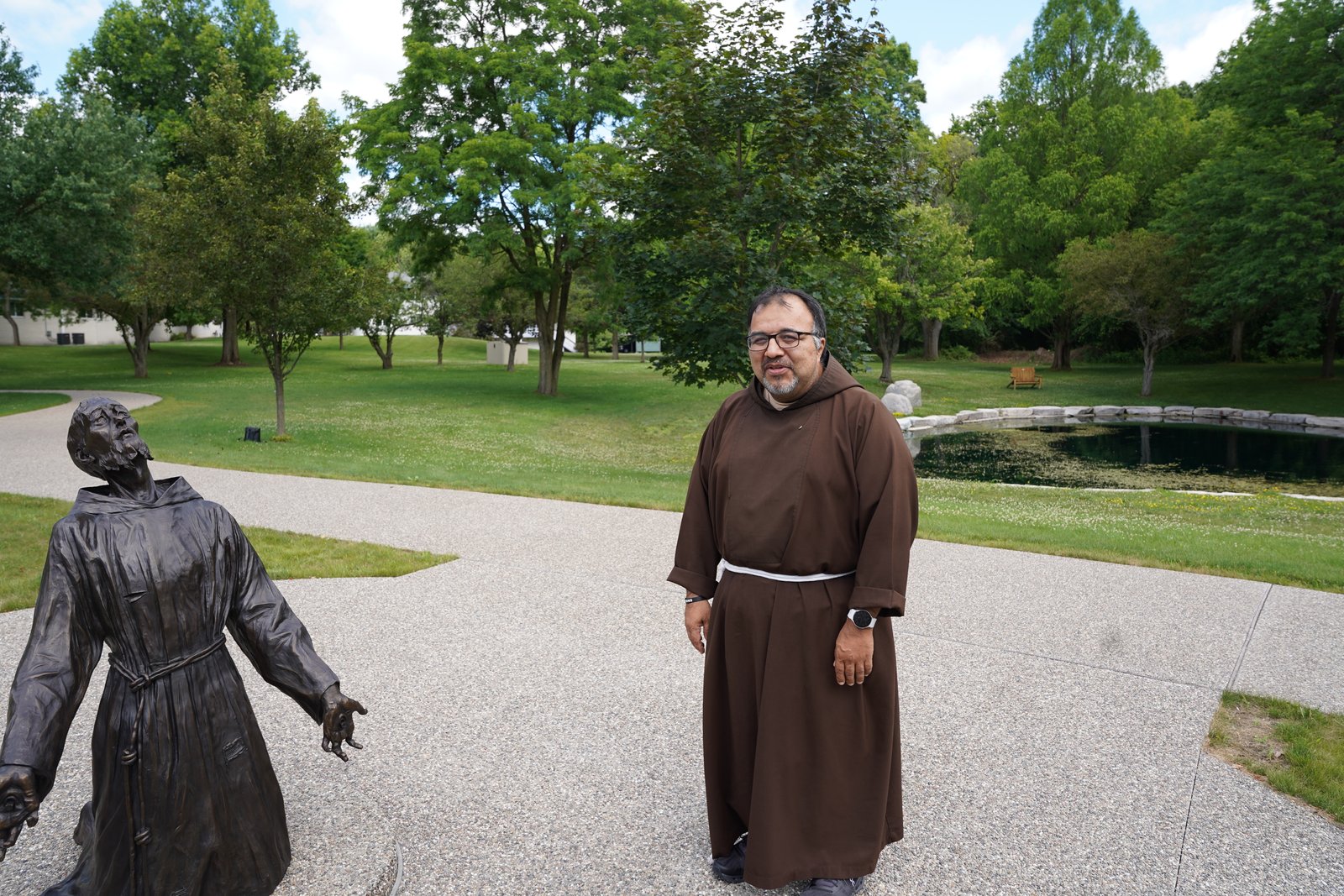
“With the statue and walkway, it allows us to make the grounds much more accessible, much more prayerful with what Mary has done, creating a statue where regardless of where you are on the grounds, you can see a friar praying and it’s an invitation to go down there and take your burdens to St. Francis and the cross,” Fr. Martinez said.
Dudek had never been to the Capuchin Retreat Center before being commissioned a year ago, but upon her visit, she said she found inspiration easily.
“I haven’t been out to the retreat center before, so it was a beautiful surprise to see this landscape when I came out, to see the beautiful rolling hills, the fountain, the pond, the bridge, the crucifix so prominently located, it’s easy to find inspiration in this place,” Dudek said.
The statue shows St. Francis in a Capuchin habit of kneeling before the cross with nails protruding out the back of his hands and feet and a wound in his side, similar to the wounds Christ received at the crucifixion.
St. Francis received the stigmata later in life, after spending years in the wilderness and traveling the countryside, asking people to repent as he fulfilled the Lord’s commission to “rebuild his church.”
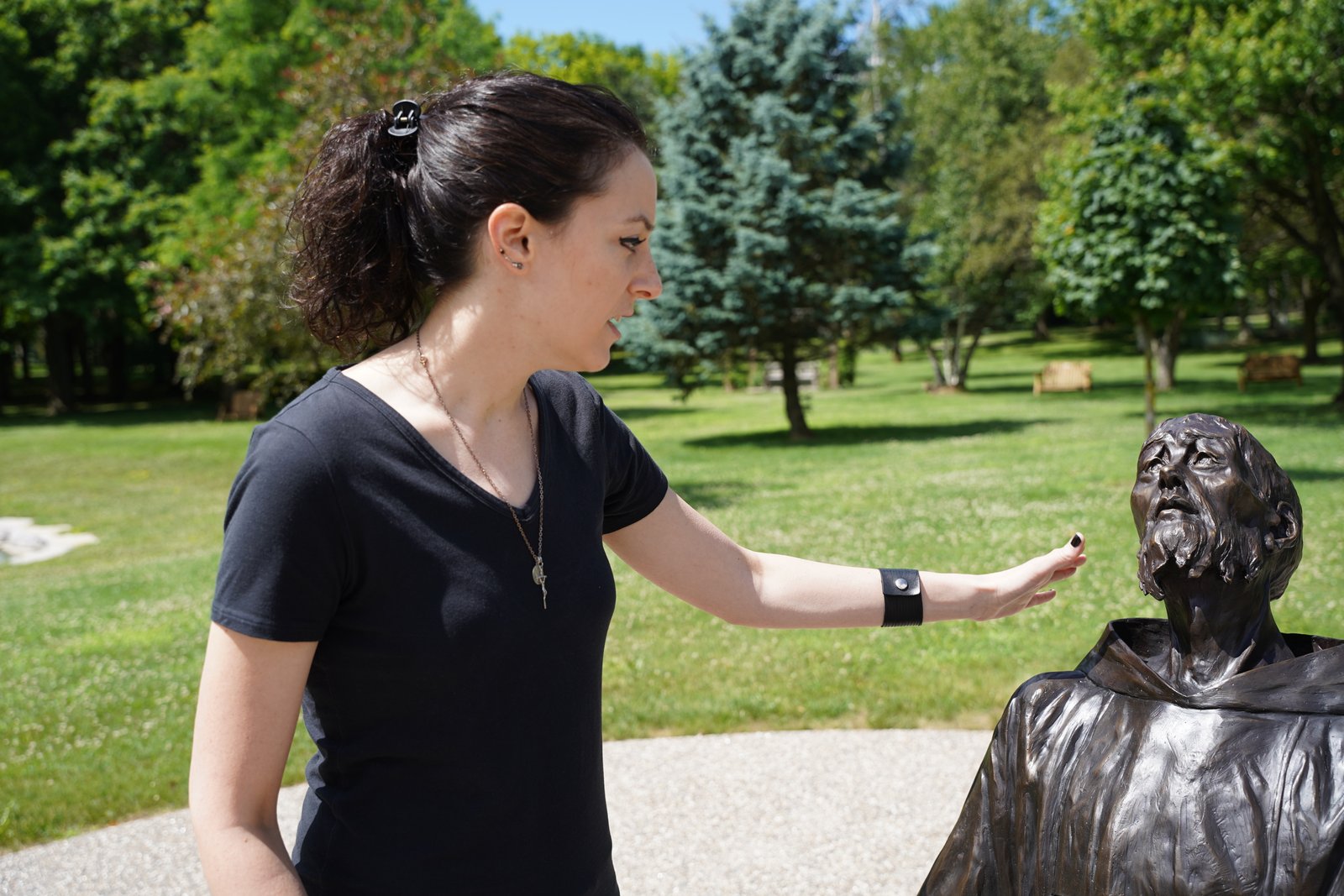
“A couple of cool things about St. Francis statues that I was unaware of until I talked to Capuchins is that when you see a St. Francis depiction, he is depicted wearing the specific habit of the local order of the Franciscan friars,” Dudek said. “It was important St. Francis had the habit of the Capuchin friars in Detroit and Washington Township here. They lent me one of their old habits to get it exactly right with the length, the sleeves, the belt with the scapular and hood. Because this St. Francis belongs to the local friars.”
Dudek also drew influence from early writings about St. Francis, including “Francis of Assisi – The Saint: Early Documents,” by Regis Armstrong, specifically the parts chronically St. Francis of Assisi receiving the stigmata in 1224, when St. Francis (1181-1226) was 42 years old.
The research, along with Dudek’s prior knowledge about the saint and what she learned from a prior pilgrimage to Assisi, helped her sculpt a weathered, seasoned St. Francis, a man who had endured much suffering.
“I learned more about the history of St. Francis, how he told his parents he wanted to go be a priest, so his father locked him up,” Dudek said. “I came to understand his grit, the history of how he has been depicted with his hair and his habit. How he had been romanticized and deromanticized throughout history. These things all factored in my considerations of St. Francis being depicted. I wanted it to be accurate, leaning towards, ‘Let’s try to get things right.’”
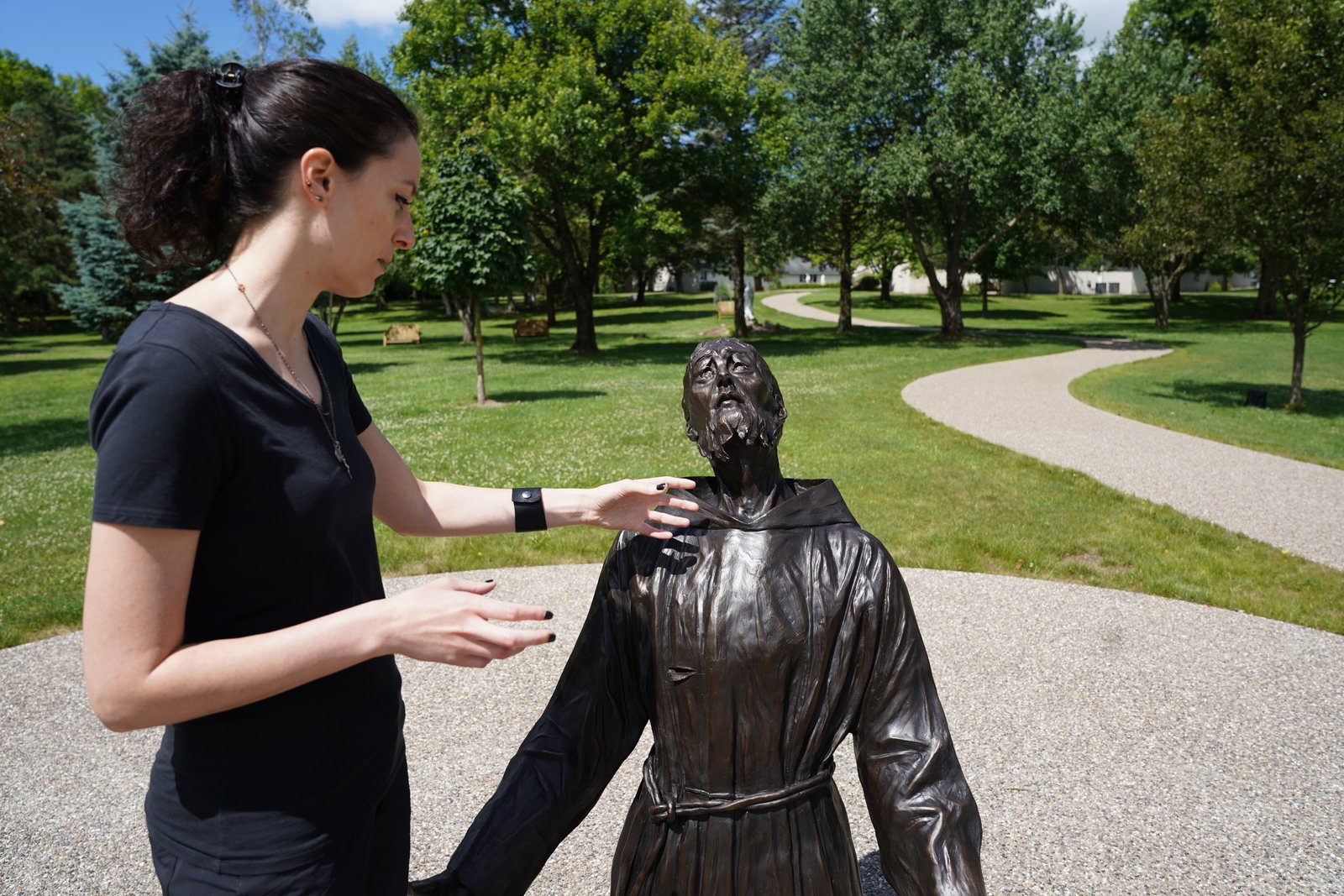
The end product is a St. Francis statue depicting suffering and tribulation, a statue to which people can feel comfortable bringing their pains and hurts, a statue that draws them close to St. Francis and, in turn, closer to the cross.
A statue that is different than what Fr. Martinez said is a change of pace from the more common, “birdbath St. Francis.”
“We have several of those on our grounds, where the birds are nesting in them,” Fr. Martinez said. “But with all the saints, I think we can hyperfocus on some extravagant or extraordinary gift they gave to the church. But as a Capuchin Franciscan, I’d like people to see all these things about Francis: his devotion to the Eucharist, his desire to see Christ in the poor and marginalized, his desire to rebuild the church, not just as an institution or a building, but as the Body of Christ.
“By focusing on Francis with the stigmata, it’s an opportunity for people to see how a saint is one who, in one of his most painful moments, turned to Christ and saw a moment he would call perfect joy,” Fr. Martinez explained. “And that’s something to which we can all aspire.”
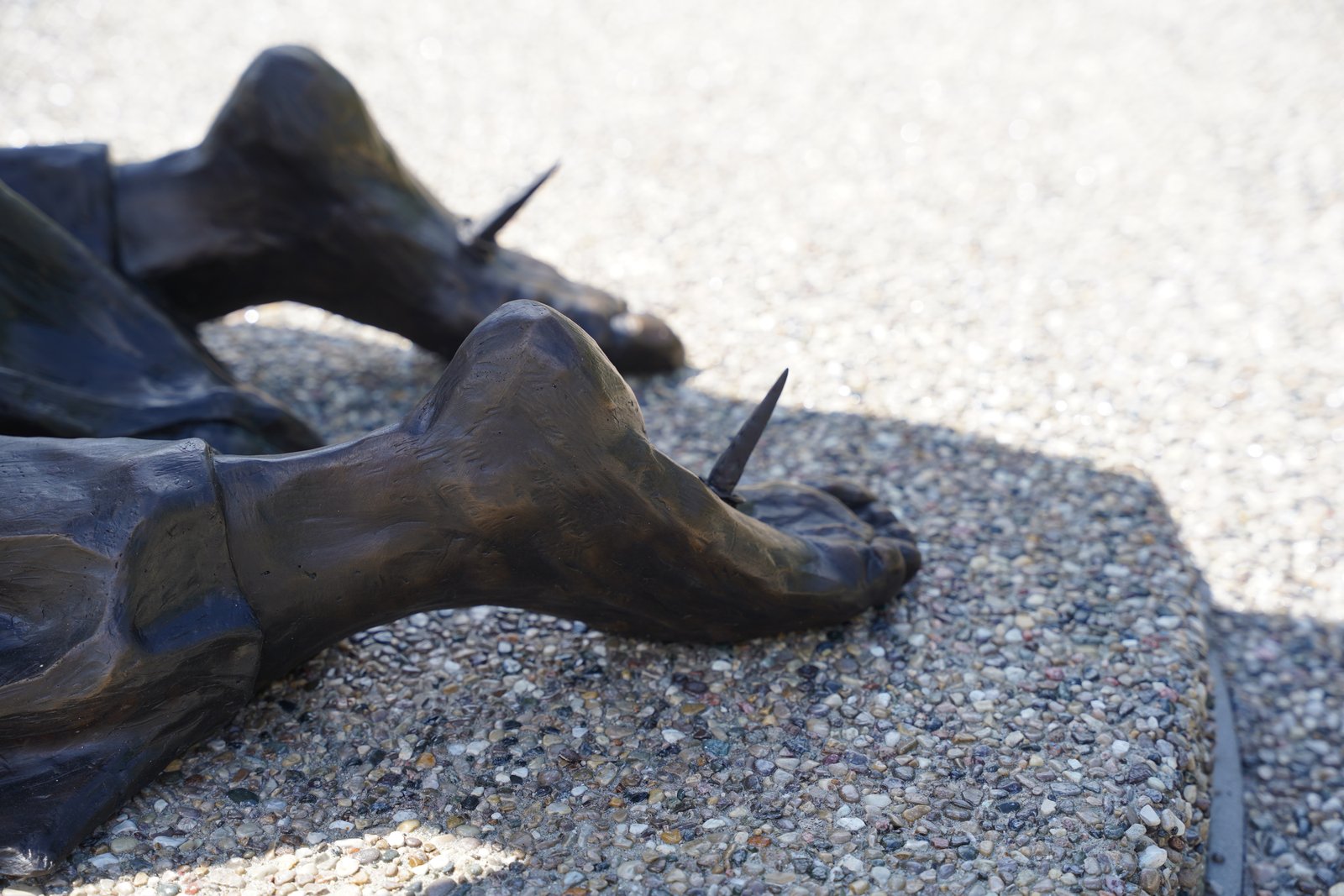
Dudek says she’s most proud of the duality expressed on Francis’ face, one of agony and exultation, very much in line with the Christian experience.
“When you first see the statue, you kind of think it’s an actual person kneeling there, not a statue,” Dudek said. “But as you get closer, you see the man kneeling in prayer in St. Francis, and hopefully, it draws them into meditation and contemplation of St. Francis. As you get closer and closer, you see the nails in his hands and feet, and his expression is one of ecstasy and torture. Hopefully, people will be drawn into the duality, the agony and ecstasy of the Christian walk, being united in suffering to Christ.”
The inspiration for commissioning a statue on a spot before the crucifix came from a woman who visited the Capuchin Retreat Center to get a better look at the crucifix, where she was praying for her husband, who was battling alcoholism.
Fr. Martinez said the woman's story inspired the retreat center staff to reimagine the space where people could bring their hurt and sufferings before the crucifix, where the statue of St. Francis receiving the stigmata could serve as a relatable spiritual guide.
“I want people to see the saints as not someone far away, but as close as you and I talking to each other right now,” Fr. Martinez said. “The saints are witnesses to us that life is tough sometimes, but through God’s grace, I go through it, and so can you.”
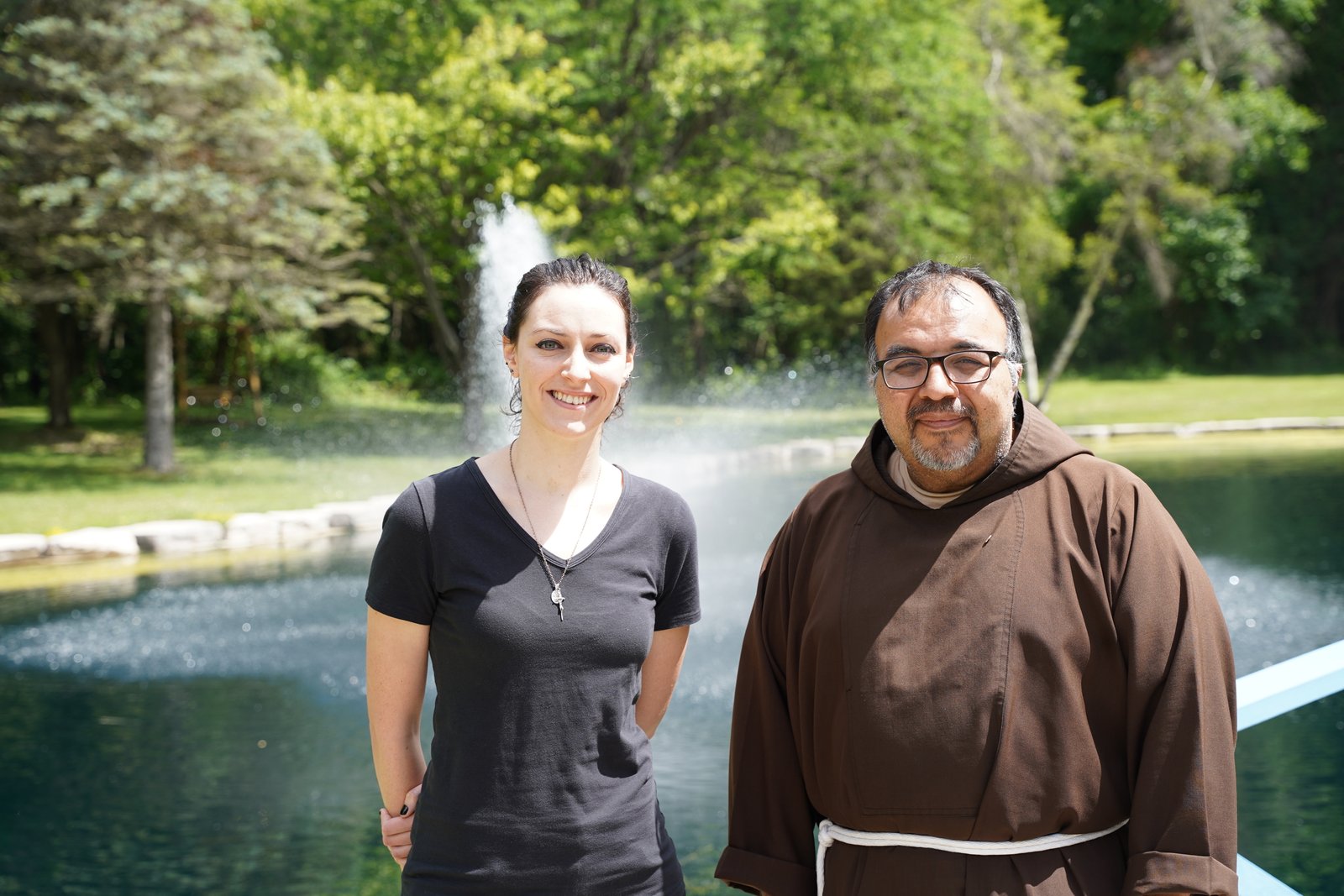
During the June 9 unveiling of the statue, Dudek addressed the crowd gathered about the year-long experience of planning, designing and sculpting the statue and how the experience has shaped her own spiritual life.
“When you study a saint, you realize how much God loves that saint; He really loved St. Francis, so much that He allowed Him to share His most intimate suffering,” Dudek said. “He gave this gift of the stigmata, He let him experience His own pain. When you see that pain and suffering St. Francis was called to as a gift from God, you see your own pains, your own trials and sufferings in life as gifts God gave you.
“This piece is about uniting your sufferings to Christ,” Dudek continued. “That is what the friars and what I hope people will see from this, seeing St. Francis’ pain and suffering and they will see him offering his suffering as a gift, sharing this beautiful, intimate, vulnerable moment with Christ.”


